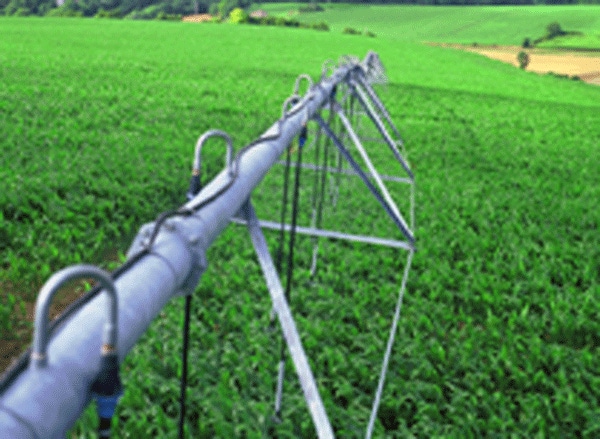October 26, 2011

Before you forget about irrigation for this year, consider the following management practices to prepare for next season.
List the repairs needed for each system— Turn each system on one more time, walk the system and list all the needed repairs and improvements. Check irrigation controls and stops. Inspect tire and drives. Create a plan for repairs and ideally make the repairs before tillage starts next spring. Double check the integrity of the electrical ground for each power and control box.
Irrigation system uniformity evaluations— The St. Joseph Conservation District shared with me the results from five recent before and after improvement system uniformity evaluations with an average increase of 9 percent. That means 9 percent less water would need to pumped or a 9 percent lower energy bill next year. Improvement system uniformity in the 10-20 percent range is not uncommon.
If you have a typical 160 acre pivot using 8-inches of water in an average irrigation need year at $3.50 per acre inch energy and repair cost you will spend almost $4,000. A 9 percent saving would equate into $360 saved on your energy cost, more than paying for the irrigation system uniformity evaluation in the first year if the needed repairs are low cost. If sizable repairs are needed, now is the time to schedule them.
Measure your available flow— One surprise we have found in working on irrigation system uniformity evaluation is that many irrigators are just guessing at the flow their pumping plant puts out. A system evaluation will measure your actual output and a flow meter can give you a simple, quick look at your systems output. Compare the sprinkler package criteria to your measured flow and make adjustments as needed. Many dealers have the capacity to measure irrigation flow for their clients.
Develop plan for future investments
Check your irrigated and non-irrigated yields— Now is the time to lay the plan for future irrigation investments. If irrigated yields are lower than expected, determine the most likely reason why. To replace our typical summer time water usage by the plan, the irrigation system should be able to supply .25-inch of water per day which equates to 5 gallons per minute per acre you plan to irrigate. Non-irrigated crop yields have had tremendous increases over the last decade, but due to higher input costs it makes it harder to survive a drought year. Now is the time to gather the data to decide where future irrigation investments are needed.
Explore your cropping options— Now is the time to assemble a map of your irrigated fields and decide what to plant next year. We have more opportunity for irrigated crop options than we have had for nearly a decade. Look at what options are available for your area and make sure to factor in the huge increase in input costs.
Investigate your irrigation energy cost— Total up the energy cost for each system and divide it by the total number of acre inches applied by the system. Energy costs below $1.50 per acre inch of irrigation should be commended. Energy costs above $3.50 per acre inch of irrigation have room for improvement. If you do not have three-phase power available now is the time to investigate the cost.
Work toward acquiring the lowest cost energy source available— Selection of energy source and system operating pressure requirements are the largest variables in energy cost for irrigation systems. Specific location and proximity to energy sources often limit the option for a location, but when readily available, the economics will most often lead to the use of three- phase electricity as the energy source.
Natural gas is a second but uncommon low cost option. Propane tends to be less total expense than the most common diesel fuel used for irrigation power. Fuel/energy choice is a huge factor in irrigation expense cost and can range from $1.50 to in excess of $12 per acre inch of water supplied.
Good irrigation record keeping now can improve your irrigation future. For more irrigation information visit our website: www.msue.msu.edu/stjoseph.
You May Also Like




